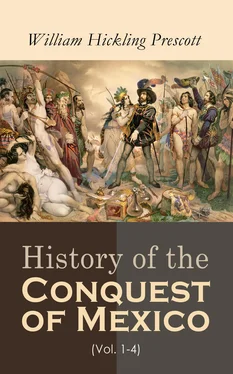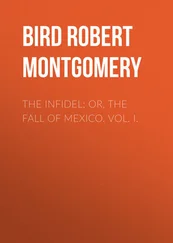[154]According to Boturini, the ancient Mexicans were acquainted with the Peruvian method of recording events by means of the quippus ,—knotted strings of various colors,—which were afterwards superseded by hieroglyphical painting. (Idea, p. 86.) He could discover, however, but a single specimen, which he met with in Tlascala, and that had nearly fallen to pieces with age. McCulloh suggests that it may have been only a wampum belt, such as is common among our North American Indians. (Researches, p. 201.) The conjecture is plausible enough. Strings of wampum, of various colors, were used by the latter people for the similar purpose of registering events. The insulated fact, recorded by Boturini, is hardly sufficient—unsupported, so far as I know, by any other testimony—to establish the existence of quippus among the Aztecs, who had but little in common with the Peruvians.
[155]Pliny, who gives a minute account of the papyrus reed of Egypt, notices the various manufactures obtained from it, as ropes, cloth, paper, etc. It also served as a thatch for the roofs of houses, and as food and drink for the natives. (Hist. Nat., lib. 11, cap. 20-22.) It is singular that the American agave , a plant so totally different, should also have been applied to all these various uses.
[156]Lorenzana, Hist. de Nueva-España, p. 8.—Boturini, Idea, p. 96.—Humboldt, Vues des Cordillères, p. 52.—Peter Martyr Anglerius, De Orbe Novo (Compluti, 1530), dec. 3, cap. 8; dec. 5, cap 10.—Martyr has given a minute description of the Indian maps sent home soon after the invasion of New Spain. His inquisitive mind was struck with the evidence they afforded of a positive civilization. Ribera, the friend of Cortés, brought back a story that the paintings were designed as patterns for embroiderers and jewellers. But Martyr had been in Egypt, and he felt little hesitation in placing the Indian drawings in the same class with those he had seen on the obelisks and temples of that country.
[157]Ixtlilxochitl, Hist. Chich., MS., Prólogo.—Idem, Sum. Relac., MS.—[“The name of Zumárraga,” says Señor Alaman, “has other and very different titles to immortality from that mentioned by Mr. Prescott,—titles founded on his virtues and apostolic labors, especially on the fervid zeal with which he defended the natives and the manifold benefits he secured to them. The loss that history suffered by the destruction of the Indian manuscripts by the missionaries has been in a great measure repaired by the writings of the missionaries themselves.” Conquista de Méjico (trad. de Vega), tom. i. p. 60.]—Writers are not agreed whether the conflagration took place in the square of Tlatelolco or Tezcuco. Comp. Clavigero, Stor. del Messico, tom. ii. p. 188, and Bustamante’s Pref. to Ixtlilxochitl, Cruautés des Conquérans, trad. de Ternaux, p. xvii.
[158]It has been my lot to record both these displays of human infirmity, so humbling to the pride of intellect. See the History of Ferdinand and Isabella, Part 2, chap. 6.
[159]Sahagun, Hist. de Nueva-España, lib. 10, cap. 27.—Bustamante, Mañanas de Alameda (México, 1836), tom. ii., Prólogo.
[160][“After the zeal of the priests had somewhat abated, or rather when the harmless nature of the paintings was better understood, the natives were permitted to use their hieroglyphics again. Among other things they wrote down in this way their sins when the priests were too busy to hear their verbal confessions.” Bancroft, Native Races, vol. ii. p. 526.—M.]
[161]Very many of the documents thus painfully amassed in the archives of the Audience of Mexico were sold, according to Bustamante, as wrapping-paper, to apothecaries, shopkeepers, and rocket-makers! Boturini’s noble collection has not fared much better.
[162]The history of this famous collection is familiar to scholars. It was sent to the Emperor Charles the Fifth, not long after the Conquest, by the viceroy Mendoza, Marques de Mondejar. The vessel fell into the hands of a French cruiser, and the manuscript was taken to Paris. It was afterwards bought by the chaplain of the English embassy, and, coming into the possession of the antiquary Purchas, was engraved, in extenso , by him, in the third volume of his “Pilgrimage.” After its publication, in 1625, the Aztec original lost its importance, and fell into oblivion so completely that, when at length the public curiosity was excited in regard to its fate, no trace of it could be discovered. Many were the speculations of scholars, at home and abroad, respecting it, and Dr. Robertson settled the question as to its existence in England, by declaring that there was no Mexican relic in that country, except a golden goblet of Montezuma. (History of America (London, 1796), vol. iii. p. 370.) Nevertheless, the identical Codex, and several other Mexican paintings, have been since discovered in the Bodleian Library. The circumstance has brought some obloquy on the historian, who, while prying into the collections of Vienna and the Escorial, could be so blind to those under his own eyes. The oversight will not appear so extraordinary to a thorough-bred collector, whether of manuscripts, or medals, or any other rarity. The Mendoza Codex is, after all, but a copy, coarsely done with a pen on European paper. Another copy, from which Archbishop Lorenzana engraved his tribute-rolls in Mexico, existed in Boturini’s collection. A third is in the Escorial, according to the Marquis of Spineto. (Lectures on the Elements of Hieroglyphics (London), Lect. 7.) This may possibly be the original painting. The entire Codex, copied from the Bodleian maps, with its Spanish and English interpretations, is included in the noble compilation of Lord Kingsborough. (Vols. i., v., vi.) It is distributed into three parts, embracing the civil history of the nation, the tributes paid by the cities, and the domestic economy and discipline of the Mexicans, and, from the fulness of the interpretation, is of much importance in regard to these several topics.
[163]It formerly belonged to the Giustiniani family, but was so little cared for that it was suffered to fall into the mischievous hands of the domestics’ children, who made sundry attempts to burn it. Fortunately, it was painted on deerskin, and, though somewhat singed, was not destroyed. (Humboldt, Vues des Cordillères, p. 89, et seq.) It is impossible to cast the eye over this brilliant assemblage of forms and colors without feeling how hopeless must be the attempt to recover a key to the Aztec mythological symbols; which are here distributed with the symmetry, indeed, but in all the endless combinations, of the kaleidoscope. It is in the third volume of Lord Kingsborough’s work.
[164]Humboldt, who has copied some pages of it in his “Atlas pittoresque,” intimates no doubt of its Aztec origin. (Vues des Cordillères, pp. 266, 267.) M. Le Noir even reads in it an exposition of Mexican Mythology, with occasional analogies to that of Egypt and of Hindostan. (Antiquités Mexicaines, tom, ii., Introd.) The fantastic forms of hieroglyphic symbols may afford analogies for almost anything.
[165]The history of this Codex, engraved entire in the third volume of the “Antiquities of Mexico,” goes no further back than 1739, when it was purchased at Vienna for the Dresden Library. It is made of the American agave . The figures painted on it bear little resemblance, either in feature or form, to the Mexican. They are surmounted by a sort of head-gear, which looks something like a modern peruke. On the chin of one we may notice a beard, a sign often used after the Conquest to denote a European. Many of the persons are sitting cross-legged. The profiles of the faces, and the whole contour of the limbs, are sketched with a spirit and freedom very unlike the hard, angular outlines of the Aztecs. The characters, also, are delicately traced, generally in an irregular but circular form, and are very minute. They are arranged, like the Egyptian, both horizontally and perpendicularly, mostly in the former manner, and, from the prevalent direction of the profiles, would seem to have been read from right to left. Whether phonetic or ideographic, they are of that compact and purely conventional sort which belongs to a well-digested system for the communication of thought. One cannot but regret that no trace should exist of the quarter whence this MS. was obtained; perhaps some part of Central America, from the region of the mysterious races who built the monuments of Mitla and Palenque; though, in truth, there seems scarcely more resemblance in the symbols to the Palenque bas-reliefs than to the Aztec paintings.{*}
Читать дальше












